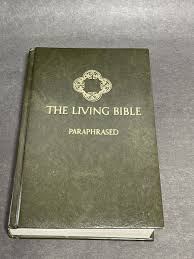In the spring of 1977, my tank unit, 1st Battalion, 70th Armor, went to Grafenwohr, West Germany, for annual gunnery training.
Tens of thousands of tanks fired their guns every year on the huge range at Grafenwohr. Wehrmacht tank crews trained there during World War II. NATO crews from many nations trained there during the Cold War.
The schedule of firing was full from January 2 until the end of the year. Tanks fire cannon and machine guns every day, year round, until German weather throws a wrench in the huge scheduling machine.
My crew and the rest of Bravo Company had zeroed our guns, fired on a stationary range and were ready for Table VIII--the annual test of individual crews firing at multiple targets while moving down range.
We rolled to the start area, loaded our ammo and waited.
And waited.
And waited.
For two weeks we ate breakfast, climbed aboard tank Bravo 1-3 and waited. Fog shrouded eastern Germany near the Czech border. We could fire in rain or snow, heat or cold, but not fog.
So we sat in the tank.
And sat.
We joked about being on Fog Watch.
We could not leave the tank--what if the fog suddenly cleared? We had to be ready.
The fog did not move.
I am reading a book called The Comfort Crisis which talks about the many virtues of boredom as well as cold, heat, hunger, exhaustion and other stresses in life. Day after day of thick fog gave me boredom at a level I have experienced few other times in life.
In the 20-man tent where we slept there was a green Bible. I thought it was some kind of Army Bible with its green cover.
But it was a Living Bible, and on Amazon right now, it is still sold in green. It was not a special Army Bible. I had never read the Bible cover to cover so I decided to relieve the days of boredom with reading the entire Bible--from Genesis to Revelation.
It turns out, the Living Bible is a translation by Kenneth Taylor in 1971. It is labeled a "paraphrase" rather than a translation and was supposed to be more readable. It gets a lot of criticism from people who prefer a more direct translation, but every translation of every book, not just the Bible, is an interpretation. Looking down at a paraphrase by people who can't read the original languages is sadly funny.
And no one could ever make the insane collection of rules and tent-making instructions in Torah readable in any paraphrase, translation or interpretation.
I plowed through it day after day. Twelve days and 1,184 pages later there was a new heaven and a new earth at the end of the book, but there was still fog at Grafenwohr. The day after that, the fog finally cleared. I stopped thinking about scallops as an abomination and the Four Horsemen of the Apocalypse and got ready to fire.
Boredom, according to Michael Easter, author of The Comfort Crisis is a spark of creativity. Boredom can leave our minds open to creative thinking. Within a year after that boring two weeks, I left the tank company and worked as a writer on the base newspaper. Maybe boredom can lead to creativity.






